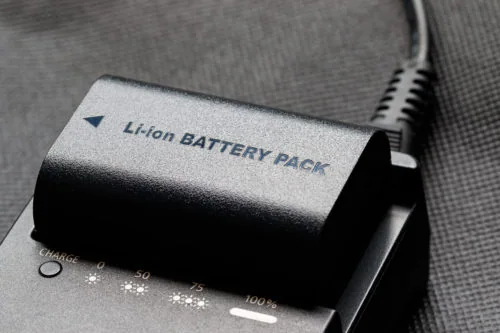Laptops, smartphones, tablets, and many other electronic devices rely on lithium-ion batteries to as a power source. They’re one of the most popular choices for batteries because they’re lightweight compared to other same-size rechargeable batteries, they last longer than other competitive batteries, and they can be recharged many times.
For all their benefits, however, lithium-ion batteries pose a major risk—they sometimes burst into flames. This only happens occasionally, with estimates averaging about three packs per million. Their sensitivity to heat also causes these batteries to degrade more quickly than other types. Degraded batteries are more likely to cause short-circuiting or fire. Though rare, these qualities make it very important to take extra consideration when transporting lithium batteries.
Why Are Lithium Batteries Regulated in Transportation?
Though incidents are rare, they’re quite dangerous when they do occur. Even more rare is thermal runaway, where high heat contributes to a chain reaction of chemical breakdowns in the battery that result in additional rapid temperature increases. Lithium batteries have a higher energy density than other types of batteries, so a thermal runaway can become very intense as that energy is released.
As such, careful packaging and handling of lithium-ion batteries is essential. This is especially in transportation, where fires in confined spaces pose a higher risk to equipment, other cargo, or passengers.
Air & Ground Transportation of Lithium Batteries
Due to the high energy potential and fire hazard, the transportation of lithium batteries requires additional precautions. Like other hazardous materials, they may require special labeling or additional documentation that indicates they are compliant with regulations.
These regulations are designed to help prevent a short-circuit or overheating event while the batteries are en route to their destination. The appropriate means of packaging batteries depends upon the type of battery, how much lithium it contains, and whether it’s already inside a piece of equipment.
Here are some of the guidelines regarding the transportation of lithium-ion batteries:
- Isolate batteries—don’t let them touch each other or metal surfaces.
- Packaging should be made of plastic or another non-conductive material.
- Maintain a cool environment.
- Use layers for leak and fire protection, as well as durable outer packing.
- Terminals and connectors should be capped or otherwise covered.
- Pack and cushion securely to prevent bumping and jostling.
Specific Requirements for Air Travel
It’s permitted to put both non-rechargeable and rechargeable lithium batteries in your carry-on—as long as they contain less than the recommended amount of lithium. The lithium content in lithium metal and lithium-alloy batteries may be up to two grams; for lithium-ion batteries, that limit is eight grams. Batteries with up to 25 grams of lithium must be individually packed to be allowed in a carry-on, and you can carry no more than two of them.
Specific Requirements for Shipping
Whether you’re shipping lithium-ion batteries across the state or around the world, there are requirements for the transportation of lithium batteries by air, sea, or ground. A lithium content over eight grams per battery pack is considered a Class 9 miscellaneous hazardous material and must be labeled as such. If the pack contains less than that, no label is required unless the shipment contains more than 12 such packs.
It is possible to consolidate several battery packs into one overpack—a strong outer box—but the outer packaging must be labeled. Within that overpack, each individual pack is required to carry the appropriate labeling, as well.
These considerations are made with the assumption that the batteries are in ideal condition. A damaged, leaking or otherwise flawed battery is even more dangerous, which is why it’s essential to avoid shipping or traveling with damaged batteries. To that end, lithium-ion batteries are tested according to UN 3090 to ensure they’re in proper working condition before travel.
Fire and thermal protection within the battery packaging offers another way to protect against battery-related fires. Fireproof materials like silica or Oxidized PAN provide an additional layer of fire protection.
Fire and Thermal Protection Fabrics for Lithium Batteries
At Tex Tech, we design non-woven Oxidized PAN felts that withstand temperatures around 2000° F. Our non-woven silica felts resist even higher temperatures. We manufacture these fibers specifically to block flame propagation and resist burn-through at temperatures much higher than what is typically generated by a standard thermal runaway. The weight of these materials begins at four ounces per square yard and goes up from there based on specific application needs and material combinations.
Since 1904, Tex Tech has been manufacturing high-quality technical textiles. We operate at the cutting edge of the industry, where our dedicated team, constant innovation, and more than 7,000 products have made us a global leader in high-performance fabrics. From aerospace and automotive to protective apparel, we proudly serve a variety of industries.
We’re happy to help you determine your flame resistant needs pertaining to lithium-ion batteries or other high temperature applications. For more information about our flame resistant materials or other products, please contact us.
